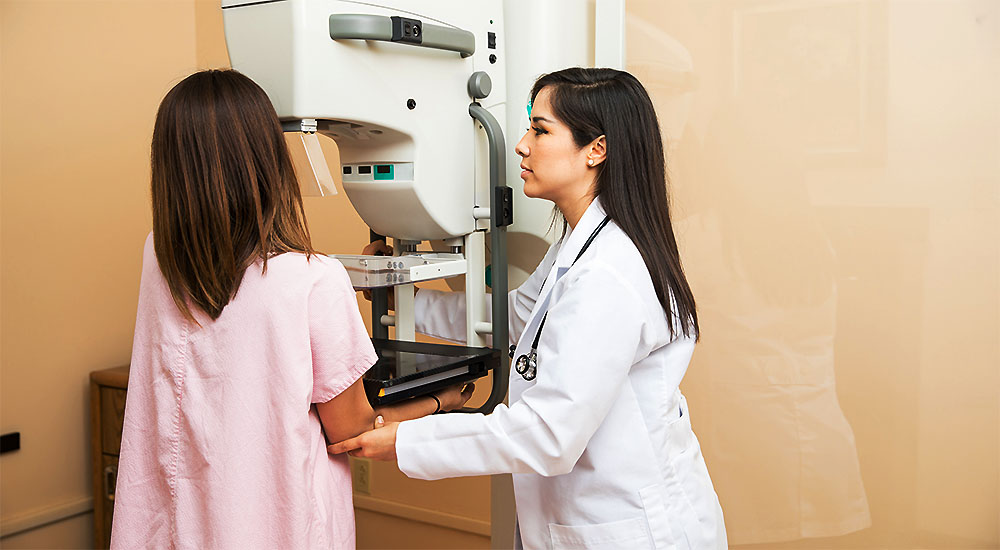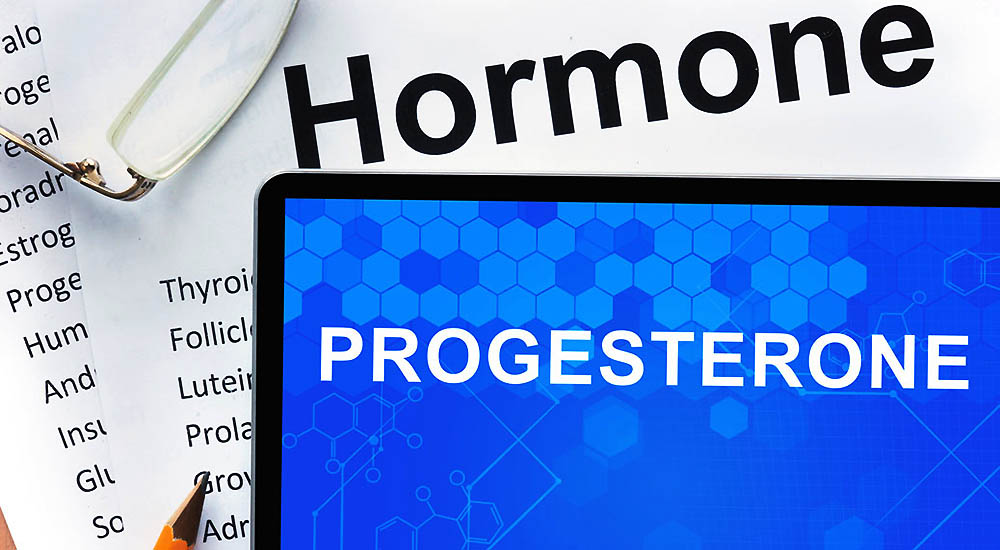Do Mammograms Really Save Lives?

Are Mammograms Life Savers?
October is Breast Cancer Awareness month, so we tend to get inundated with a lot of pinks. Pink Ribbons, Pink Shirts, and even pink KFC buckets in order to bring awareness to breast cancer. The message of your “need” to receive a mammogram is especially strong.
In honor of this time of year, I wanted to talk a little bit about breast cancer. I want to review “the truths”, I feel all women should know about mammography, including your options.
Large Study Shows No Difference in Tumors of Screened vs Unscreened Women
A 17-year study done in Denmark took large groups of women, 35 to 84 years of age. There were two groups, women that had been screened regularly using mammography and those that had never been screened. It was assumed that any tumors found in the screened group would be non-advanced tumors. Why? The expectation was regular screening would “catch” early on any abnormal breast changes. Similarly, it was assumed that more advanced tumors would be found in the group that was never screened as they had no early warning due to a lack of mammograms.
Surprising to the researchers was the result of absolutely no difference between the two groups of women, screened or not.
This was a long term study evaluating women over a span of 50 years of their lives. No difference in the state of tumors indicates mammograms are not helpful in the role of preventing tumor advancement.
Mammograms falsely diagnosis 1 in 3 women or 33.3%
One of the biggest problems with mammography is that we have a one in three over-diagnosis. One out of three women is told they have cancer when they do not. Appreciate that this is not just the stress of being told you have cancer when you don’t, but the likelihood of receiving invasive surgery, radiation, and/or chemotherapy when you never needed it. The damage that radiation and chemotherapy inflict on the body is quite devastating, especially when it’s completely unnecessary.
When you compare the U.S. to other industrialized countries like the United Kingdom, Canada, Australia, and Norway, the same incidence of one in three over-diagnosed is seen. Clearly it’s not just a U.S. problem, but rather a mammography problem.
Dense breasts or fibrocystic breasts have a poor mammogram result
If you have fibrocystic breasts your gynecologist has likely mentioned it to you after a breast exam. Or, it’s something you yourself can feel during a self-breast exam. If you’re in that category it’s very important to know that the sensitivity of mammograms tends to plummet from 98%, for women with non-fibrocystic breast tissue, down to 48%. This is why those with fibrocystic breasts not only endure even more pain with mammograms but tend to get repeat mammograms due to potential “suspicious” areas. Typically, you then “end up” with an ultrasound which is not invasive, because it involves no radiation, and is the more accurate method of visualizing breast tissue that is denser.
My mother had this experience
On a personal note, I used to have extremely dense breast tissue, fibrocystic breasts. Through nutrition and hormonal balance, it’s improved dramatically, easily 95% improvement. My mom was the same way, and she used to get her mammograms every year. Due to her fibrocystic breasts, they would see “something” which resulted in a follow-up mammogram, and then finally resort to an ultrasound to make a definitive diagnosis. After a double, the dose of radiation, each and every year she would be deemed “fine”, only to endure the same double dose of radiation and attendant stress each and every year. She was receiving a great deal of radiation.
After becoming a clinician I finally put a stop to it and she just received ultrasounds going forward.
I’m sure many of you have had the same experience; a potentially “alarming” report, more radiation, and then ultimately an ultrasound. Ultrasound, therefore, can be a much better option when you have dense breasts particularly.
The pressure exerted by a mammogram is in excess of what can rupture a “safe” tumor
The mammogram procedure itself also holds some liabilities in the very nature of how it’s performed. I’ve never had one, but it’s well known that it can be very, painful, most especially with fibrocystic breasts, but even for women with non-cystic breast tissue.
Over and above pain, a mammogram applies 42 pounds of pressure between two metal plates on your breast tissue. Research shows it only takes 22 pounds of pressure, to rupture a tumor that’s been encapsulated. A healthy immune system will very nicely encapsulate cancer cells and prevent them from gaining a blood supply so that they can proliferate and grow. It’s considered that the 42 pounds of pressure are more than enough to rupture tumors allowing cancer cells to move out into your bloodstream, metastasizing, spreading, potentially to other parts of your body, not to mention allowing the breast cancer cells themselves to become activated.
There is a cumulative effect of radiation, and the fact that radiation itself can induce breast cancer is something you very much to consider.
Vested interest plays an unfortunate role in breast cancer
I hate talking about vested interest, but it definitely is a real concern and a fact. A review of 171 articles showed that a very high percentage of those stating only “good things” about mammography were written by groups of doctors that had a vested interest in mammography technology, meaning they themselves gleaned financial benefit from mammography.
There are many such examples of money at the root of the health information we hear and it is unfortunate. But with a little diligence, it’s not difficult to find the truth and it’s my goal to share as much of it as possible.
Are mammograms preventive?
There’s also the perception of prevention regarding mammograms. The message is delivered aggressively in October; we hear “save your life; get a mammogram” so it’s no wonder the perceptions about what mammograms provide are a bit skewed.
It’s important to realize that the mammogram is a detection device, it’s not preventive. The typical American woman with not the healthiest lifestyle may think, “I got my mammogram, so I’m safe,” but that’s very far from the truth.
When American women have surveyed women about how effective mammograms were or their perceived efficacy from mammograms, almost 72% stated that getting a mammogram would cut your risk of dying from breast cancer by 50%.
Another group was asked to predict the following: If one thousand women received mammograms, how many lives would be saved? 72% of those surveyed felt the average number of lives saved would be 80. What’s the true answer? One.
Only one out of a thousand lives are saved by getting a mammogram. There is an overly optimistic view of mammogram efficacy due to all this propaganda that we hear.
Alternatives to mammograms
What are the alternatives? I mentioned ultrasound earlier. What’s nice about ultrasound is there’s zero radiation, and it’s painless.
t’s been estimated that it’s as good as mammography for detecting breast tumors. It is operator-sensitive, so you want to make sure that the person performing your breast ultrasound is someone who does it regularly.
Unfortunately, these technicians are found at mammogram centers. One year I got so tired of the fight I had to go through in order to receive an ultrasound, without first getting a mammogram that I went to an ultrasound clinic vs. a mammogram center. It was clear the technician wasn’t comfortable with performing a breast ultrasound and because the validity of the ultrasound is operator dependent, you really want to go to a facility that specializes in breast evaluation.
They’re very good at detecting any problems because ultrasound is what’s resorted to when anything is suspicious on a mammogram. So these people are very good at what they’re doing and I recommend you seek them out.
You just have to be ready to hold your ground, saying no to the mammogram and yes to only ultrasound, but it’s worth it in order to get the experienced ultrasound tech who does it all day long.
Self-breast exam
The clinical breast exam that you would receive at your gynecologist along with the self-breast exam that you should do regularly on yourself is another alternative.
The clinical breast exam is considered to be on par with the mammogram, meaning when they’ve done studies of detection with just clinical breast exam versus detection with clinical breast exam plus mammogram, no difference was seen.
Does that surprise you?
Thermography
There’s also thermography, which is infrared technology. It too has the benefit of no radiation, but there’s been some talk about false positives.
Other research has pointed out that it’s not actually false positives, but rather, thermography is actually detecting very early changes in breast tissue health. It can be detecting functional changes in the breast very early, which could be a nice heads up, that, “Wow, my breast health is not what it should be and what can I do to turn this around before it does turn into cancer?”
It’s a personal choice; it should be an informed one
Ultimately it’s a very personal choice, but it’s important to be informed.
I do have a bias; let me be perfectly frank about that. I think irradiating breast tissue is a bad idea unless you or your doctor has felt something, and an ultrasound confirms that further investigation is required. In that case, you’re choosing a single mammogram because you need some more visual tools, which makes sense.
But on an annual or semi-annual basis, there are so many other less risky options.
How’s your hormonal health?
If your health is not the way you want it to be, whether it’s breast health, hormone health, or you generally don’t feel as good as you’d like, feel free to reach out.
We specialize in getting to the underlying root cause as to why your body’s giving you symptoms.
Do you need help with your health?
We have the diagnostic and testing tools, the clinical experience, and a different medical approach to discovering the root cause of why you have the symptoms that are bothering you. As long as you are ready to make some dietary and lifestyle changes, we can help you. We will "hold your hand" through the changes, step by step, to make each step an easy one. We are located in Clearwater, FL, at 1000 S Ft Harrison, at the corner of Ft. Harrison Ave. and Magnolia St. There is plenty of parking space directly accessible from Ft Harrison. If it is not convenient for you to come to Root Cause Medical Clinic, we offer telehealth/telemedicine consultations to residents of certain states. Call us for details.
Contact us for a Consultation – Call 727-335-0400

Dr. Vikki Petersen DC. CCN
Founder of Root Cause Medical Clinic
Certified Functional Medicine Practitioner
Dr Vikki Petersen is a public speaker, author of two books, several eBooks and creates cutting edge content for her YouTube community. Dr Vikki is committed to bringing Root Cause Medicine and its unique approach to restoring health naturally to the world.
Ask a Doctor
Have a health concern you'd like to speak with a doctor about? Or just want clarity on a subject? Ask Us!


